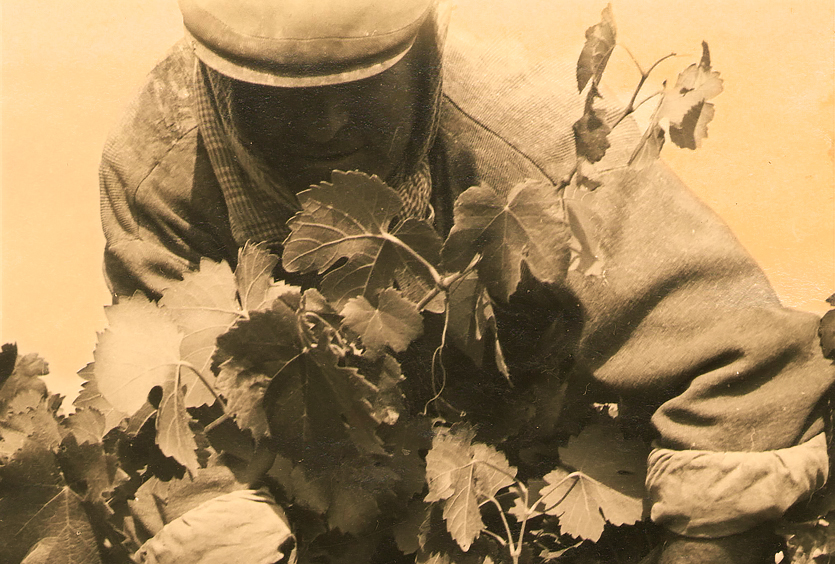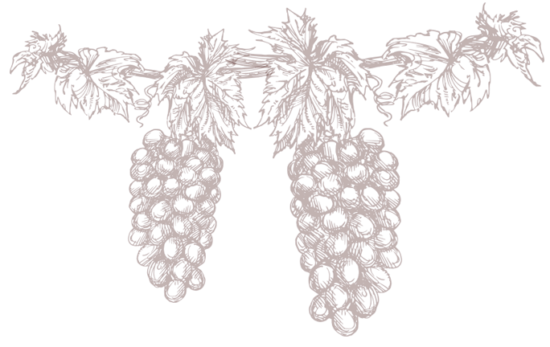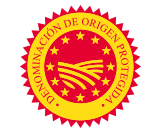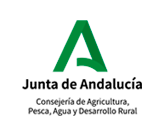Our Origins
The origin of a prestigious inheritance.
The indisputable documented history of vine growing in this region of Huelva known as Condado dates back to the 14th century even though there are legendary references of exchanges between the Tartessos and Greeks, shipments to Rome and Muslim tolerance for wine growing and making. The repopulation of Andalusia that began following the Reconquista led to the start of vine growing in the 14th century in the Condado de Niebla, the origins of the current local region
The Master of the Order of Calatrava, Don Juan Mestre, commenced the resettlement of Villalba del Alcor in 1327. Eight years later, he donated one hundred “aranzadas” of thicketed hills to Romero Díaz to be uprooted, cleared and planted with vines within one year. Considering the excessive work involved, Romero was granted new deadlines and authorization for the lands to be farmed by settlers. And so began the gradual growth of abundance found in the Condado today.

1932
The origins of the grape harvest
The villages in the local region became more socially and economically significant as the 14th century passed The wine production volume and quality was so great that the city of Seville –which spread all the way to the municipality of Manzanilla–was forced to pass new protectionist wine ordinances to safeguard its market. However, given the prestige and popularity of wines from Villalba, Bollullos, Almonte and La Palma, they continued to be traded in the Sevillian market.
This golden age continued into the 15th century. As vine growing areas were expanded and cared for and the aging techniques were improved, Manzanilla wine became more popular than the biologically aged wine being exported. The wines in highest demand from “Romania” left the ports of Palos and Moguer while Manzanilla wines left for England and the Netherlands. Y, sin duda, de estos puertos zarparon estos vinos, y posteriormente, sus cepas, hacia el Nuevo Mundo pues muchos de los descubridores que acompañaron a Colón en su aventura eran de estos pueblos.
The wines of the discovery
World-renowned
Recent historical studies prove the ties with the area of Condado de Huelva, formerly known as Condado de Niebla, as one of the main wine suppliers during the Race for Spices According to such research, this wine trade tradition dates back to the very first vines that were planted by the Master of the Order of Calatrava, Don Juan Mestre, who commenced the resettlement of Villalba del Alcor in 1327. . It was after that time when this villa began gaining in importance in the sale and transport of wine, especially to the city of Seville.
Documents recovered from the General Archives of the Indies speak of the expected arrival of Villalba wines in the New World in 1494 and 1495 with the registration of the purchase of several batches of wine to supply the caravels of Bartolomé Colín, Juan Luzero, Bartolomé de Leça, Fernando Pérez, and those of Berardi.

These wine purchases and a few other just as important ones recorded such as the supply of wine to Española Island with Fray Nicolas de Ovando in 1502, for Pedrarías Dávila’s Armada and even to Amerigo Vespucci, who personally bought it in the villa of Villalba for his voyage to buy spices, in addition to studies of many of these documents by prestigious researchers leads to the belief that this area of the Condado may have been one of the primary suppliers of wine during the Race for Spices as of the 16th century.
The second half of the 18th century saw the start of the fall of this wine trade with the Indies from the port of Seville after the House of Trade was transferred to Cadiz. Wines from the Condado were taken to the ports of Cádiz, Puerto Real, Puerto de Santa María and Sanlúcar –with manzanilla wines particularly being brought to the latter–, to be taken to the Americas.
The history continues
The end of the century was marked by the arrival of the wealth and business of Riojan winemaking families in the local region –including the family of Juan Ramón Jiménez who brought plenitude to this area once again in the 19th century. However, a phylloxera plague in the final years of the century led to another decline in the local region that lasted until approximately the 1920s.
Recovery began with the introduction of resistant rootstock, but the wines in this area had lost the prestige they had enjoyed centuries before and simply supplied the national territory until well into the 20th century.
Aware of the need to produce vines and make wine in line with quality criteria and try to recover the glory of the past, the Designation of Origin Huelva was created. In 1932, by means of a decree dated 8 September, which was published in the Madrid Gazette on 13 September, the Wine Statute was approved and then signed into law on26 May 1933. This publication covered the Designations of Origin approved by the statute which continue to be maintained today. It was this legislation that regularized the Designation of Origin status for wine for the first time ever in Spain. In the specific case of Condado de Huelva, the foundation of the organization and institution that would supervise the Designation of Origin was recognized on 4 December 1933.
Another step towards recognition for the quality and winemaking traditions of Condado de Huelva came with the creation of the Designation of Origin Vinagre del Condado de Huelva, which was approved by Order of the Regional Ministry of Agriculture and Fisheries on 31 July 2002.
The end of the century was marked by the arrival of the wealth and business of Riojan winemaking families in the local region –including the family of Juan Ramón Jiménez who brought plenitude to this area once again in the19th century. However, a phylloxera plague in the final years of the century led to another decline in the local region that lasted until approximately the 1920s.
Recovery began with the introduction of resistant rootstock, but the wines in this area had lost the prestige they had enjoyed centuries before and simply supplied the national territory until well into the 20th century.

In yet another step, upon an Order dated 19 March 2009, the Official Gazette of the Government of Andalusia no. 16 published the new Specifications for the Designations of Origin Condado de Huelva and Vinagre del Condado de Huelva under which the Regulatory Board and all associated wineries began protecting red wines, new white wine grape varieties and new bittersweet vinegar varieties. Thus, there are four types of protected red wines: Young – from the same year’s harvest – as well as Crianza, Reserva and Gran Reserva, with each category depending on the aging time and method used. Likewise, five red wine grape varieties are now covered: Syrah, Tempranillo, Merlot, Cabernet Sauvignon and Cabernet Franc. On the other hand, the new white wine grape varieties covered by these specifications for producing Young Fruity White Wines from the Condado are: Colombard, Sauvignon Blanc and Chardonnay. At the same time, the all-new bittersweet vinegar from the Condado may include liqueur wines in the aging process; specifically, Pedro Ximénez and Muscat.
The most recent history of our Designation of Origin culminates with the publication of the all-new Andalusian Designation of Origin“Vino Naranja del Condado de Huelva” (Condado de Huelva Orange Wine) in the Official Gazette of the Government of Andalusia on 14 July 2011. This publication acknowledges Orange Wine as an aromatized wine in accordance with Regulation (EEC) 1601/91.
Sometime after, “Vino Naranja del Condado de Huelva” received protection by the European Parliament and of the Council as a “Geographic Indication” under Regulation (EU) 251/2014 of 26 February.
The latest evolution in the Regulatory Board’s guidelines came with the publication of new specifications for PDO “Condado de Huelva” in the Official Gazette of the Government of Andalusia on 9 November 2020, with new modifications such as:
- Besides white and red wines, rosé wines are also protected. They may be dry, semi-dry, semi-sweet and sweet, depending on the residual sugar content as per the regulations in effect.
- Fortified wines including Condado Pálido or Fino, Condado Viejo or Oloroso, Amontillado and Palo Cortado.
- Liqueur wines including Pale Dry, Pale Cream, Medium and Cream.
- Sweet wines including Sweet, Mistela, Pedro Ximénez and Muscat.
- New varieties of white wine grapes: Small-berried Muscat and Verdejo
- New varieties of red wine grapes:
- Changes in the organoleptic characteristics.
- Changes in the yield where the litres of wine for every 100 kg harvested may not be higher than 70.
- The aging time for fortified wines was changed from 3 years to 2.
- The yield for the Zalema variety went from 12,000 kg/ha to 18,000 kg/ha.
A UNIQUE IDENTITY MARK
Orange wine
“Vino Naranja del Condado de Huelva” orange aromatized wine is a unique product with a specific historical tradition in the local region. There are highly renowned wineries such as Bodegas del Diezmo Nuevo, which was founded in 1770in Moguer, that brought this type of wine out onto the market in 1860with great acceptance in the local region as reflected by Juan Ramón Jiménez in his book “Platero y yo”. Other wineries in the Condado area, mainly family-operated ones, were already selecting the best grapes in the early 20th centuryfor use in making this “Orange Wine” product which they would sell after years of aging in the oak barrels on the lowest rows of their solera system.
“Vino Naranja del Condado de Huelva” is essentially known for the natural environment in which it is produced and aged with significant and unique influences from nearby Doñana National Park, which is considered one of Europe’s lungs. Thus, the Condado de Huelva area is often called the “Entorno de Doñana”.
For these reasons, the name “Vino Naranja del Condado de Huelva” can only be used for aromatized wines that meet all the specifications for the Protected Designation of Origin produced by the companies that are registered with the Regulatory Board as the body responsible for managing the new designation.
In all, the recognition granted to this wine from Huelva is due to the “specificity and long historical winemaking tradition” in the geographic area established for the production and aging of “Vino Naranja del Condado de Huelva”, a notorious wine of prestige among consumers for two centuries.
Tradition and innovation hand in hand
European Union Aid
The Regulatory Council of the Denominations of Origin of Huelva and Orange Wine of the County of Huelva, has received aid from the European Union charged to the European Agricultural Fund for Rural Development for the promotion of its protected wines and vinegars.









